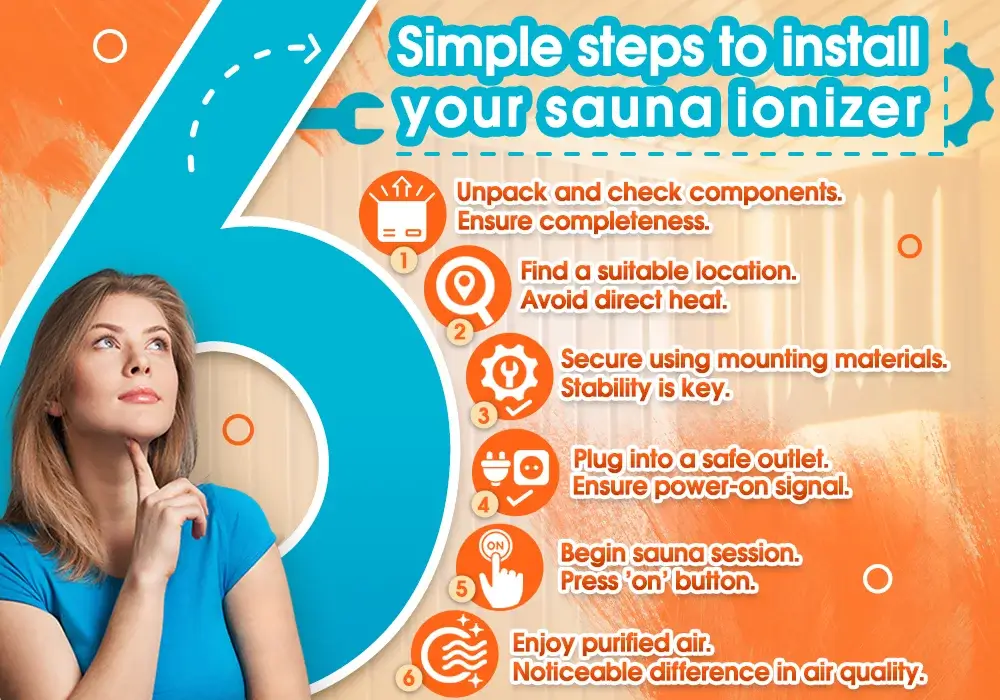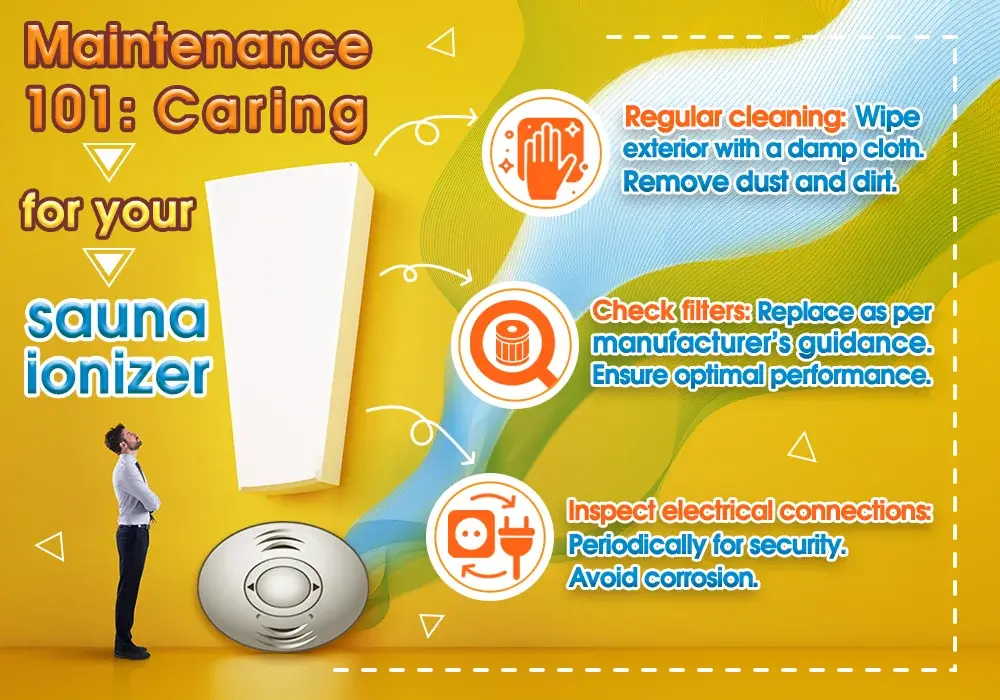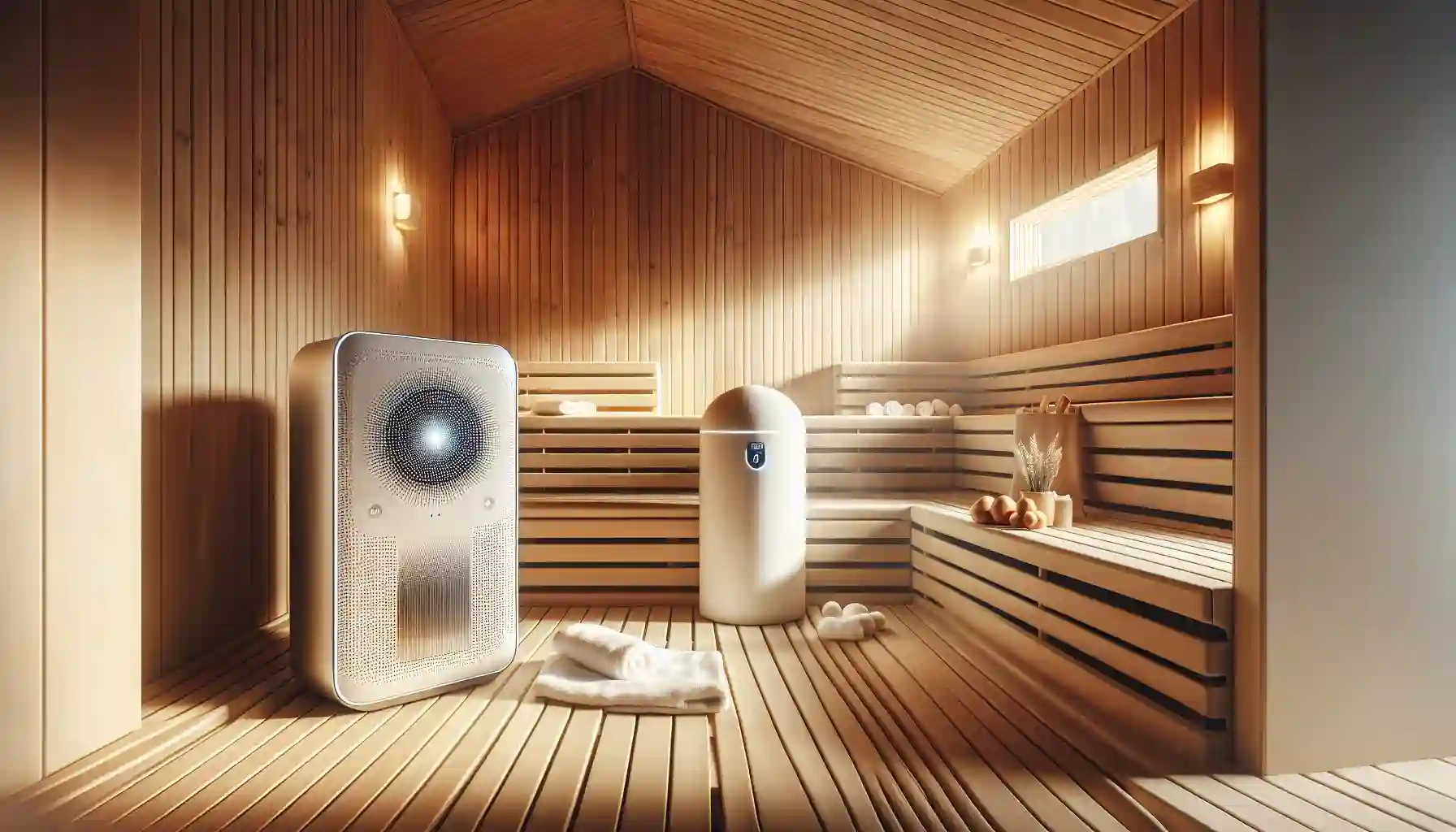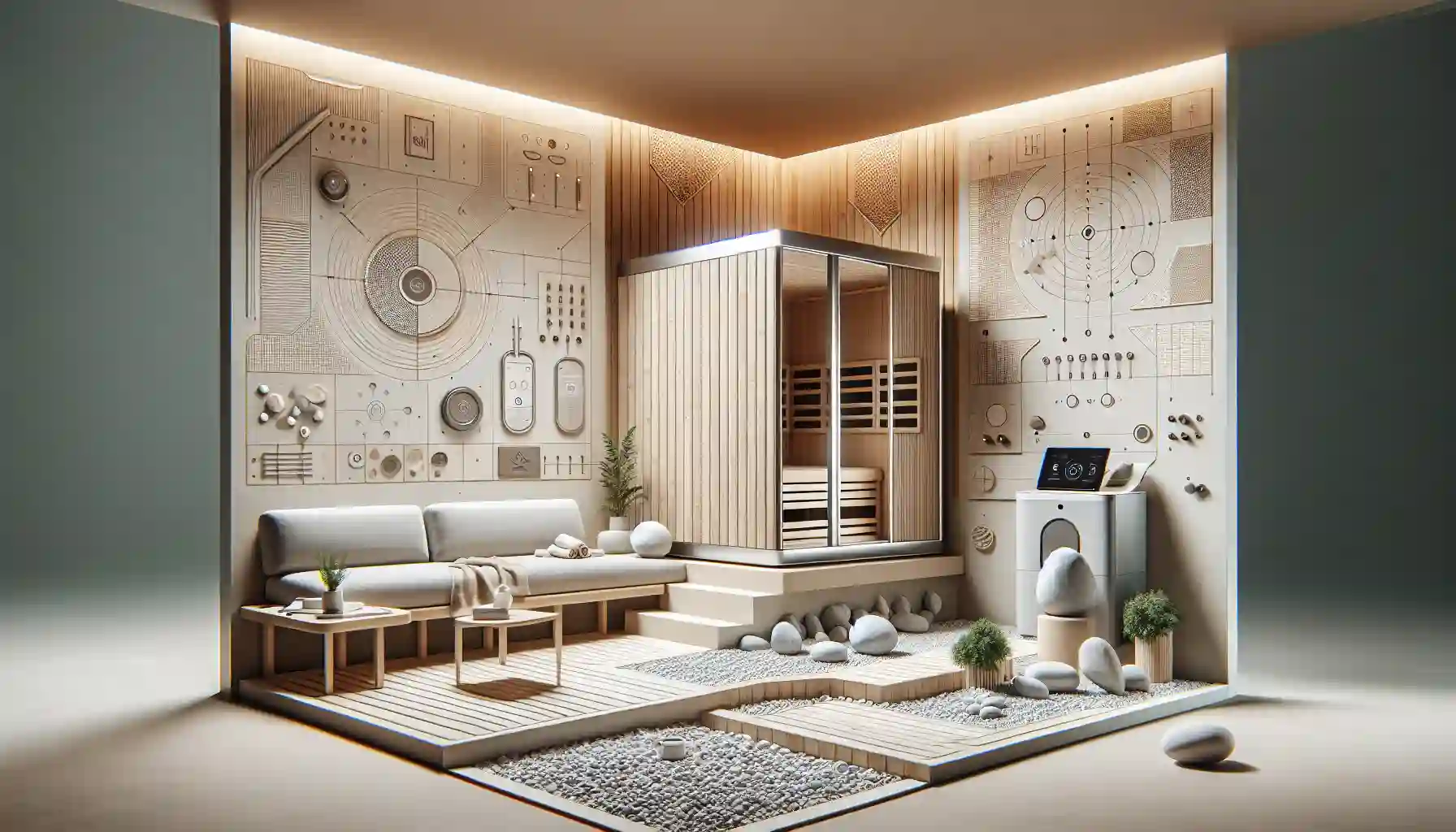You love your sauna. It’s your personal retreat for relaxation, detoxification, and quiet moments. Whether you’re sweating it out in a traditional steam sauna or basking in the deep warmth of an infrared model, the experience is all about wellness. But have you ever thought about the quality of the air you’re breathing inside that cozy, heated space? This is where a sauna ionizer comes into the picture.
Think of it as an upgrade for the very air you Breathe during your session. A sauna ionizer is a small device designed to improve sauna air quality, making your escape even more refreshing and enjoyable. We're going to explore what these gadgets are, how they work, and whether one might be the perfect addition to your wellness routine.
What Exactly Is a Sauna Ionizer?
At its core, a sauna ionizer is an electronic air purifier specifically designed to function in the high-heat environment of a sauna. Unlike standard air purifiers you might have in your living room, these are built to withstand elevated temperatures and humidity.
The magic behind an air ionizer for sauna use is its ability to generate negative ions.
How Negative Ions Clean the Air
You might remember learning about ions in science class. They are simply atoms or molecules that have gained or lost an electron, giving them an electrical charge. Negative ions are molecules that have gained an electron.
Here’s how they work to clean the air:
- Generation: The sauna ionizer uses electricity to create and release a steady stream of negative ions into the air.
- Attraction: These negatively charged ions are attracted to airborne particles like dust, pollen, mold spores, and other allergens. These particles are typically positively charged or neutral.
- Binding: The negative ions latch onto these particles, making them heavier.
- Removal: Once heavy enough, these combined particles can no longer float in the air. They fall to the floor or other surfaces in the sauna, effectively removing them from the air you breathe.
The result is fresher-smelling, cleaner-feeling air. Many people associate the air after a thunderstorm with a clean, crisp quality—that’s partly due to the high concentration of negative ions created by lightning. A sauna ionizer aims to replicate a fraction of that natural process within your enclosed sauna space.
The Benefits of Using a Sauna Ionizer
While you shouldn't expect an ionizer to cure health conditions, adding one to your sauna can enhance the overall experience. The benefits are primarily centered around comfort and creating a more pristine environment for your relaxation time.
Improved Sauna Air Quality
The primary benefit is cleaner air. Saunas are enclosed spaces, and without proper ventilation, dust, lint from towels, and other microscopic particles can circulate. By helping these particles fall out of the air, a sauna ionizer can significantly improve the sauna air quality, making each breath feel cleaner and lighter.
Odor Control
Saunas can sometimes develop a stale or musty smell, especially if they aren't aired out properly. An ionizer helps neutralize odors by removing the airborne particles that carry them. This leaves your sauna smelling fresh and ready for your next session without relying on artificial fragrances or chemical sprays.
Enhanced Sense of Relaxation
For many users, the perceived freshness of ionized air contributes to a deeper sense of relaxation and well-being. While the science on the direct psychological effects of negative ions is still developing, the subjective experience is often reported as positive. Breathing air that feels purer can help you focus on the restorative aspects of your sauna session, potentially deepening your relaxation and comfort. This is one of the key wellness benefits supporters talk about.
Ionizers for Different Sauna Types
A sauna ionizer can be a great addition to almost any type of sauna, but its role might differ slightly depending on the model you own.
traditional saunas (Steam or Hot Rock)
traditional saunas operate at very high temperatures and often involve high humidity when water is ladled over hot rocks. An ionizer used in this setting must be extremely durable and rated for these conditions. The benefit here is significant, as the steam can trap dust and odors. An ionizer helps clear the air as the sauna cools down or can be run before your session to "prep" the environment.
infrared saunas
Ionizers are very popular infrared sauna accessories. Since infrared saunas heat the body directly at lower ambient temperatures, people often spend longer sessions inside. This makes sustained sauna air quality even more important. Many modern infrared saunas come with a built-in ionizer. If yours doesn’t, adding an external one is a simple and effective upgrade to ensure the air remains fresh for the duration of your 30- to 45-minute session.
What to Look for Before Buying a Sauna Ionizer
Not all ionizers are created equal, especially when intended for a sauna. Here are key considerations to ensure you choose a safe and effective device.
Ozone Safety: The Most Important Factor
Some ionizers can produce ozone as a byproduct. Ozone can be a lung irritant, and the enclosed space of a sauna is the last place you want it accumulating. The Environmental Protection Agency (EPA) cautions against using ozone-generating devices in occupied spaces.
Always choose a sauna ionizer that is explicitly labeled as "ozone-free" or produces levels well below established safety standards. Reputable manufacturers prioritize this and will clearly state it in their product specifications.
Ion Output
The effectiveness of an ionizer is related to its ion output, usually measured in ions per cubic centimeter. Look for a model that is appropriately sized for your sauna. A higher output isn't always better; you want a device that can effectively clean the space without being overkill.
Heat and Humidity Tolerance
This is non-negotiable. The device must be built with materials that can withstand your sauna’s maximum temperature and humidity levels without melting, warping, or malfunctioning. Check the manufacturer's specifications for temperature ratings.
Power Source and Installation
Most sauna ionizers are plug-and-play. They might plug into an internal outlet (common in infrared saunas) or require external power. Consider where you will place it and how you will power it. Some models are designed to be mounted on a wall or placed on a bench.
Maintenance and Noise Levels
- Maintenance: How do you clean it? Some ionizers have small metal plates that collect particles and need to be wiped down periodically. Others may have a small, replaceable filter. Choose a model with a simple cleaning routine.
- Noise: Most sauna ionizers are virtually silent, but it’s always a good idea to check reviews for any comments on buzzing or humming sounds that could disturb your peaceful sauna time.
Setup and Best Practices for Your Ionizer
Getting the most out of your sauna ionizer is easy if you follow a few simple guidelines.
- Optimal Placement: Place the ionizer where it can achieve good air circulation, but not where it will be directly splashed with water. A high corner or a spot on the back wall, away from the heater, is often ideal.
- Timing Is Key: For the best results, run the ionizer for 15-20 minutes before you enter the sauna. This gives it time to clean the air. You can leave it on during your session (if it's an ozone-free model) or run it again afterward to help clear out any lingering humidity and odors.
- Regular Cleaning: Follow the manufacturer's instructions for cleaning. A quick wipe of the collector plates or filter check every few weeks is usually all that’s needed to keep it running efficiently.
- Pair with Ventilation: An ionizer is a supplement to, not a replacement for, good ventilation. Always use your sauna’s built-in vents to allow fresh air to circulate, especially during and after your session.
Ionizer vs. Other Air Purifiers
How does a sauna ionizer stack up against other air purification technologies?
- HEPA Filters: HEPA filters are excellent at physically trapping very small particles. However, most are not designed for the high heat of a sauna and their fans can be noisy. They are better suited for general home use.
- Activated Carbon Filters: These are fantastic for absorbing gases, chemicals, and odors. Some sauna ionizers actually incorporate a small amount of carbon. On its own, a carbon filter doesn't remove dust particles as effectively as an ionizer.
- Sauna Ionizer: The ionizer's strength is its silent, fan-less operation and its effectiveness at removing airborne particulates in a hot environment. It’s specifically designed for the challenges of a sauna.
Each technology has its place, but for improving sauna air quality, the specialized design of a sauna ionizer is typically the most practical and effective choice.
Myths and Realities
It's easy to get carried away with wellness claims. Let's set the record straight on what a sauna ionizer does and doesn't do.
What it DOES:
- Removes airborne particles like dust, dander, and pollen.
- Helps reduce stale or musty odors.
- Creates a perception of fresher, cleaner air.
What it DOESN'T do:
- Cure asthma or allergies (though reducing airborne irritants may provide comfort).
- Detoxify your body (that’s the job of your sweat and internal organs).
- Generate significant, clinically proven health benefits beyond creating a cleaner environment. Be wary of products making bold medical claims.
Think of it as a tool for environmental enhancement, not a medical device.
A Quick Buyer's Checklist
Ready to explore options? Keep this checklist handy:
- Is it certified ozone-free or very low ozone?
- Is it rated for my sauna’s maximum temperature?
- Is the ion output suitable for my sauna's size?
- Is the power source convenient for my setup?
- Is the maintenance routine simple?
- Is the manufacturer reputable with positive reviews?
Simple Maintenance Routine
Maintaining your sauna ionizer is typically a breeze.
- Weekly/Bi-Weekly: Turn off and unplug the device. Gently slide out the particle collector plate or grid.
- Wipe Down: Use a soft, dry cloth to wipe the dust and particles off the plate. For stubborn buildup, a slightly damp cloth can be used, but ensure the plate is completely dry before reinserting it.
- Check Vents: Make sure the air intake and output vents on the ionizer are free of dust or obstruction.
- Reassemble: Slide the clean plate back in, plug it in, and it's ready to go.

The Final Word on Fresher Sauna Air
A sauna is an investment in your well-being. Optimizing every aspect of that experience—right down to the air you breathe—can make a noticeable difference. A sauna ionizer offers a simple, quiet, and effective way to enhance your personal retreat by improving sauna air quality, controlling odors, and contributing to an overall sense of pristine comfort.
By choosing a high-quality, ozone-free model and using it correctly, you can ensure that every breath you take inside your sauna is as clean and refreshing as the experience itself. Explore your options, prioritize safety, and get ready to elevate your sauna sessions to a whole new level of pure relaxation.



